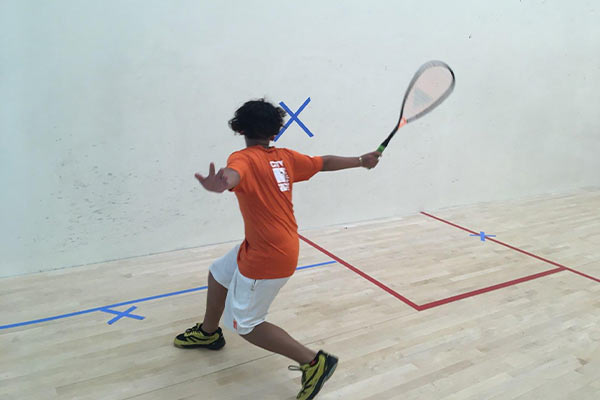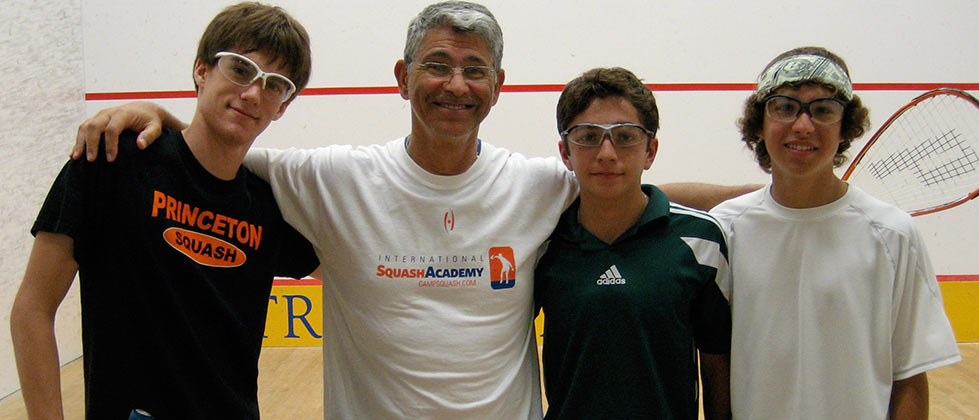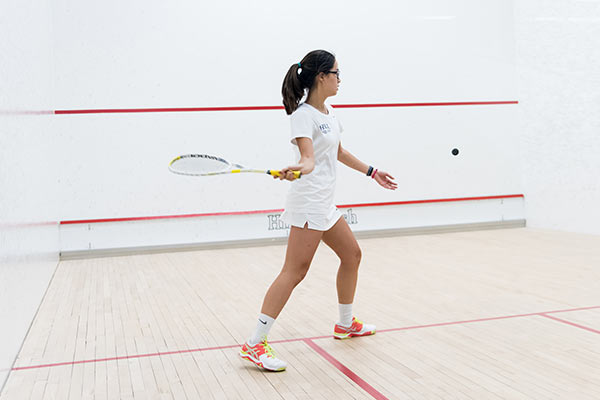Stretching and Flexibility Tips for Squash Players

One of the most important things you can do before stepping on the squash court for a practice or a match is to ensure you’ve properly warmed yourself up in a way that’s most beneficial to your body. There are plenty of people and articles out on the internet that say there’s one specific way to stretch and get warmed up, but that’s simply not true.
We live in a world where literally no two people are exactly alike, and even if that was the case, this is not a guarantee for their bodies reacting exactly the same way from a warm-up routine. What works incredibly well for one person may be terrible for someone else. A great example is former NFL star wide receiver, Randy Moss. It’s vitally important for football players to be loose and ready to play at kickoff, but do you know what Moss did for his pregame stretching routine? Well, he didn’t actually stretch at all – he just jumped around and shook his hands/arms a little bit.
That was it, and he went on to have a pretty nice career over a 14-year span where he suited up for fewer than 16 games in a season just twice (and they were both 13 games).
Of course, this isn’t an excuse for you to get out of stretching and flexibility exercises before stepping onto the squash court, but it’s just an example to help you realize that there’s no one-size-fits-all formula – you really do have to figure out what makes the most sense for you.
With this in mind, we wanted to quickly detail the four different stretching routines that are available for athletes to choose from.
Static Stretching
This kind of stretching routine takes place when there aren’t any significant movements or muscle contractions around a joint. Basically, it’s the type of stretching where you’re sitting or standing and doing a simple movement to stretch out a muscle. A joint is taken to its full range of motion and is then held at that point for a specific amount of time.
PNF Stretching
While PNF Stretching (Proprioceptive Neuromuscular Facilitation) is typically categorized as a method of stretching – like the rest of the methods already listed here – that actually isn’t the case. PNF is a system of therapy that includes a wide range of techniques and procedures for rehabilitating people that are dealing with different types of musculoskeletal injuries or conditions. However, stretching is one aspect of the PNF methods.
Dynamic Stretching
These days, dynamic stretching seems to be one of the more popular stretching methods used among athletes. This method involves active Range of Motion movements that are usually carried out in a specific pattern related to either the sport or exercise that a person is about to participate in.
Ballistic Stretching
While this can sometimes be mistaken as dynamic stretching, ballistic stretching is actually quite different. It involves more of a bouncing movement (hence the word ballistic) that targets muscles through and beyond the standard Range of Motion with less active control.



